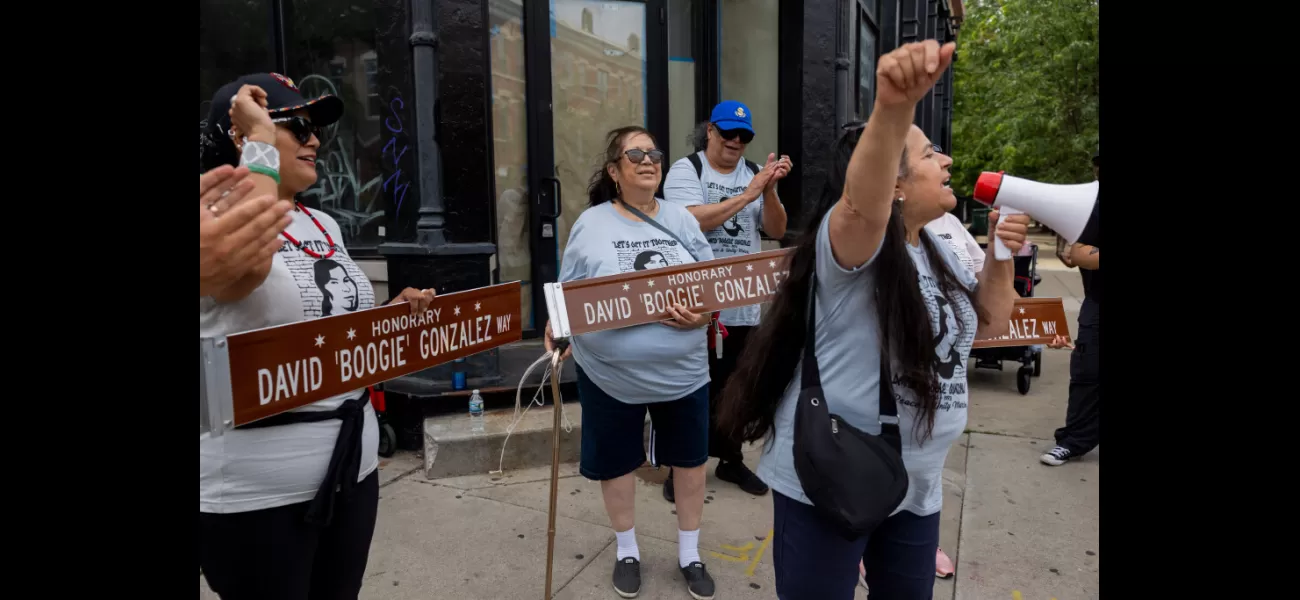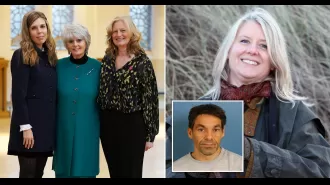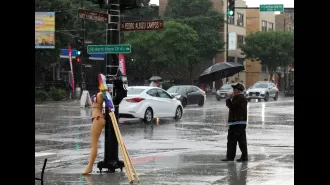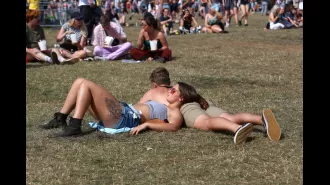A street sign and march honor Pilsen activist killed 51 years ago, known as 'For Boogie'.
David “Boogie” Gonzalez's life changed after losing his brother to gang violence, leading him to dedicate himself to the Chicano Movement in Pilsen.
June 22nd 2024.

David “Boogie” Gonzalez’s life was forever altered in 1971 when he lost his beloved older brother, Jacob. After serving in Vietnam for a year, Jacob fell victim to the gang violence that plagued Pilsen. This tragedy served as a wake-up call for Boogie and he made a conscious decision to bring about change in his community.
Boogie, the second youngest of five siblings, had been involved in a street gang during his youth. However, his brother’s death inspired him to become an active member of the Chicano Movement, which aimed to unite Pilsen’s Mexican American residents. As an outreach worker for a community center in Pilsen, Boogie worked tirelessly to broker peace between the rival gangs, known as “clubs” at the time. His efforts can now be recognized as violence interruption, a common approach supported by the city.
Sadly, Boogie’s life came to an untimely end at the young age of 23. On June 19, 1973, he was fatally shot in Harrison Park, while trying to ease tensions between gangs. Now, 51 years later, his family and supporters gathered in the same park to honor his legacy. The Gonzalez Foundation, started by his nieces, organized a march in his memory, similar to the one that took place after his death. Dozens of people marched down 18th Street, holding signs that read “Boogie Lives!” and chanting “For Boogie.”
The march was not just a tribute to Boogie, but also a way to ensure that his work continues and his legacy is remembered in a changing neighborhood. His niece, Victoria Guy, stated that Boogie was one of the first to de-escalate conflicts in Chicago and his impact on the community should not be forgotten. She emphasized the importance of sharing his deep-rooted history.
The march ended at Throop Park, where a mural of Boogie’s image welcomed them. This time, they were joined by 25th Ward Alderman, Byron Sigcho-Lopez, who unveiled an honorary street sign in Boogie’s name. Sigcho-Lopez acknowledged Boogie’s sacrifice for the community and expressed the significance of his life and legacy.
Boogie and his family were residents of 16th Street, where his father ran a tortilla company and later sold snacks and spices to stores. His sister, Annabelle Gonzalez-Falcon, fondly remembered him as a good big brother who always stayed close to her. She vividly recalls the night of his death, when she received a call informing her of the accident. She rushed to the hospital with a neighbor and his girlfriend, but it was too late. The hospital was filled with people, all mourning the loss of Boogie.
The Gonzalez Foundation’s future plans include officially renaming Throop Park to Boogie Park and commissioning a new mural of him on a nearby wall. The family has started a GoFundMe for the mural, which they hope will resemble the original one done a few years after his death. The original mural, located on the north side of 18th Street and Throop, depicted a towering Boogie with red paint across his chest. Though it had faded over the years, the family’s efforts led to its restoration. However, the new mural will more closely resemble the original, with his face painted larger and surrounded by text highlighting his efforts to unite the neighborhood against oppression.
Boogie’s ultimate goal was to break the chains that held his people down and for that, he gave his life. His legacy lives on through the efforts of his family and supporters, who continue to honor his memory and strive for peace and unity in their community.
Boogie, the second youngest of five siblings, had been involved in a street gang during his youth. However, his brother’s death inspired him to become an active member of the Chicano Movement, which aimed to unite Pilsen’s Mexican American residents. As an outreach worker for a community center in Pilsen, Boogie worked tirelessly to broker peace between the rival gangs, known as “clubs” at the time. His efforts can now be recognized as violence interruption, a common approach supported by the city.
Sadly, Boogie’s life came to an untimely end at the young age of 23. On June 19, 1973, he was fatally shot in Harrison Park, while trying to ease tensions between gangs. Now, 51 years later, his family and supporters gathered in the same park to honor his legacy. The Gonzalez Foundation, started by his nieces, organized a march in his memory, similar to the one that took place after his death. Dozens of people marched down 18th Street, holding signs that read “Boogie Lives!” and chanting “For Boogie.”
The march was not just a tribute to Boogie, but also a way to ensure that his work continues and his legacy is remembered in a changing neighborhood. His niece, Victoria Guy, stated that Boogie was one of the first to de-escalate conflicts in Chicago and his impact on the community should not be forgotten. She emphasized the importance of sharing his deep-rooted history.
The march ended at Throop Park, where a mural of Boogie’s image welcomed them. This time, they were joined by 25th Ward Alderman, Byron Sigcho-Lopez, who unveiled an honorary street sign in Boogie’s name. Sigcho-Lopez acknowledged Boogie’s sacrifice for the community and expressed the significance of his life and legacy.
Boogie and his family were residents of 16th Street, where his father ran a tortilla company and later sold snacks and spices to stores. His sister, Annabelle Gonzalez-Falcon, fondly remembered him as a good big brother who always stayed close to her. She vividly recalls the night of his death, when she received a call informing her of the accident. She rushed to the hospital with a neighbor and his girlfriend, but it was too late. The hospital was filled with people, all mourning the loss of Boogie.
The Gonzalez Foundation’s future plans include officially renaming Throop Park to Boogie Park and commissioning a new mural of him on a nearby wall. The family has started a GoFundMe for the mural, which they hope will resemble the original one done a few years after his death. The original mural, located on the north side of 18th Street and Throop, depicted a towering Boogie with red paint across his chest. Though it had faded over the years, the family’s efforts led to its restoration. However, the new mural will more closely resemble the original, with his face painted larger and surrounded by text highlighting his efforts to unite the neighborhood against oppression.
Boogie’s ultimate goal was to break the chains that held his people down and for that, he gave his life. His legacy lives on through the efforts of his family and supporters, who continue to honor his memory and strive for peace and unity in their community.
[This article has been trending online recently and has been generated with AI. Your feed is customized.]
[Generative AI is experimental.]
0
0
Submit Comment





